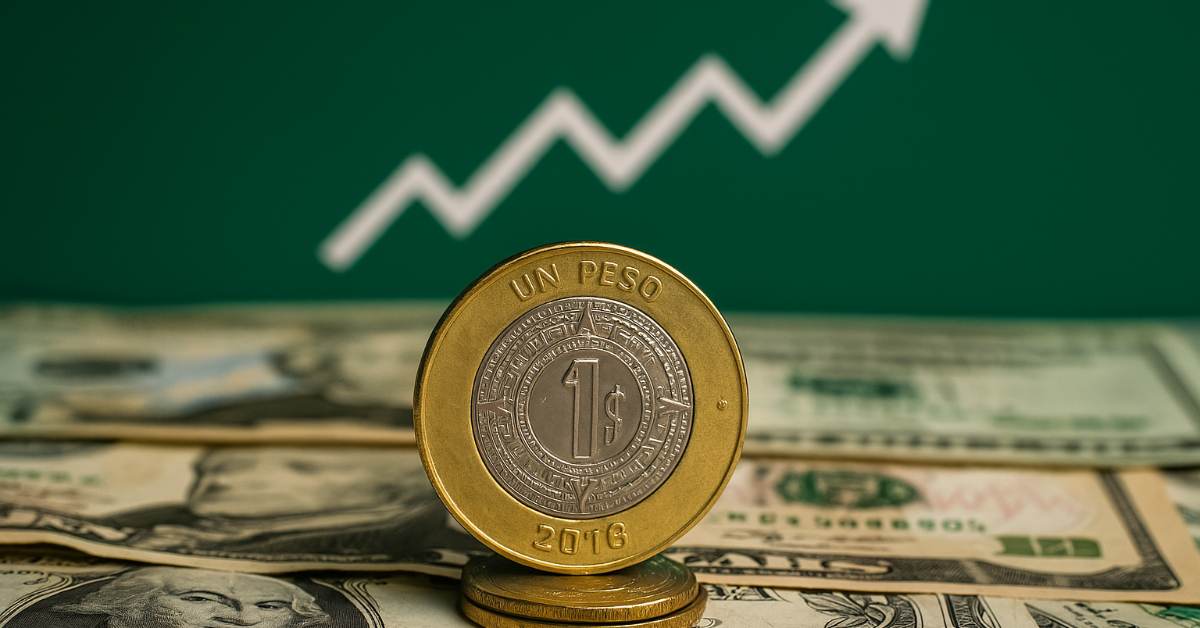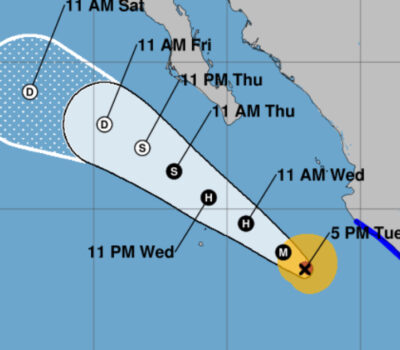The Mexican peso appreciated for a seventh consecutive day, closing at 18.7307 per dollar amid U.S. fiscal policy shifts and weakening of the dollar. Analysts expect a rebound but warn of long-term depreciation.
The Mexican peso posted its seventh straight day of gains on Tuesday, bolstered by a weakening U.S. dollar and investor reaction to U.S. fiscal developments. The peso closed the session at 18.7307 per dollar, an appreciation of 3.47 centavos—or 0.19 percent—from the previous day’s official close of 18.7654, according to data from the Bank of Mexico (Banxico).
The appreciation comes as markets absorb news of a sweeping U.S. fiscal and spending bill, dubbed the “One Big Beautiful Bill,” backed by former President Donald Trump. The bill, which proposes significant tax cuts and a $3.3 trillion increase in U.S. federal debt, was passed by the Senate and is now awaiting approval in the House of Representatives.
The dollar traded in a range between 18.8252 and 18.6619 pesos during the session, with the Intercontinental Exchange’s Dollar Index (DXY)—which tracks the dollar against a basket of six major currencies—falling 0.13 percent to 96.65 points. This weakening in the greenback provided support to emerging market currencies, including the Mexican peso.
Grupo Financiero Banorte issued a statement expressing optimism for continued peso strength: “We expect the recovery to continue after breaking through the resistance level at 18.70. The next lower level to test is at 18.55. Resistance is at 18.80. We suggest holding positions.”
The peso’s recent momentum has been remarkable, extending its winning streak to seven consecutive trading sessions and rising 43.76 centavos—or 2.28 percent—since the close on Friday, June 20, when it stood at 19.1683 pesos per dollar. This surge brings the peso to its strongest level since August 20 of last year.
U.S. Policy in Focus
Much of the peso’s recent strength can be attributed to external factors, particularly evolving U.S. fiscal and monetary policy. The Trump-backed bill adds significant fiscal stimulus at a time when many investors are already wary of the ballooning U.S. debt. Market watchers believe this could weigh further on the dollar, especially if inflation picks up or if the U.S. Federal Reserve signals rate cuts in response.
Federal Reserve Chairman Jerome Powell added to the mix by signaling a cautious approach to interest rates. Speaking at a central bank summit in Portugal, Powell reiterated that the Fed would take a “wait and see” approach to assess the impact of global tariffs and inflationary pressures before adjusting interest rates.
“We’re just taking some time,” Powell said. He also acknowledged a handwritten note from former President Trump urging the Fed to cut rates in line with actions taken by other global central banks.
Outlook Mixed Despite Recent Gains
Despite the upbeat sentiment this week, not all forecasts for the peso remain rosy. Banxico’s latest survey of private sector economists shows that experts anticipate the peso could weaken by more than 7 percent from current levels, ending the year around 20.13 pesos per dollar. Still, that projection is an improvement over last month’s survey, which pegged the year-end exchange rate closer to 20.50.
Analysts cite several factors behind the expected weakening, including persistent inflation concerns, uncertainty in global markets, and the potential for slower economic growth in both the U.S. and Mexico. Domestically, Mexico continues to face challenges ranging from weak investment to sluggish productivity, which could limit the peso’s upward momentum.
Investor Watch: Technical Levels and Sentiment
From a technical standpoint, traders are watching key levels closely. The break below the 18.70 resistance level has given the peso breathing room to test stronger territory, with 18.55 being the next support level on the radar. Resistance is expected near 18.80, with any reversal likely to face headwinds from continued U.S. policy uncertainty.
Currency traders and institutional investors remain cautious, balancing short-term gains against medium-term risks. While the peso’s recent rally is encouraging, broader market dynamics—especially actions from the U.S. Federal Reserve and political developments in Washington—will likely dictate its next move.
As of now, the local currency appears to be riding a wave of favorable external winds. Whether this turns into a long-term trend or a short-lived rally will depend largely on policy shifts in the U.S. and the resilience of the Mexican economy in the months ahead.
The Mexican peso appreciated for a seventh consecutive day, closing at 18.7307 per dollar amid U.S. fiscal policy shifts and . . .












